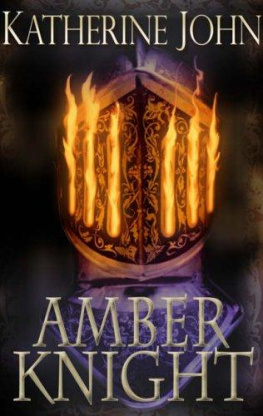I have used the form Katherine (rather than Catherine) throughout, as Katherines name is usually spelled with a K in contemporary sources.
The correct medieval form of her name is Katherine de Swynford, but I have chosen to refer to her as Katherine Swynford, as she is traditionally and popularly known. It is worth noting that in John of Gaunts Register, Katherines name is given as either Katherine or Kateryn(e). The language of the court and the aristocracy at this time was Norman French, and these spellings indicate that Johnand othersprobably pronounced her name in the French way as Katrine.
The modern equivalent of fourteenth- century monetary values has been given in parentheses throughout the book. For currency conversion, I have used an invaluable Internet website, measuringworth.com, produced by Lawrence H. Officer, professor of Economics at the University of Illinois, Chicago, and Samuel H. Williams, professor of Economics, emeritus, of Miami University.
INTRODUCTION

T his is a love story, one of the greatest and most remarkable love stories of medieval England. It is the extraordinary tale of an exceptional woman, Katherine Swynford, who became first the mistress and later the wife of John of Gaunt, Duke of Lancaster, one of the outstanding princes of the high Middle Ages.
Katherine Swynfords story first captured my imagination four decades ago, when I read Anya Setons famous novel about her, Katherine. This epic novel made a tremendous impact on me as an adolescent, and still has the power to move me today. And I am not alone, because it has hardly been out of print since its first publication in 1954, and ranked ninety- fifth in the top one hundred favorite books voted for by the public in BBC TVs The Big Read in 2003. (Interested readers will find more about this novel in the Appendix.)
It would not be an exaggeration to say that I have wanted to write this book for forty years. But even when I became a published author in the late eighties, no publisher would have contemplated commissioning a biography of this relatively obscure woman. And that remained the situation for many years, until the recent explosion of interest in all things historical, which inspired me to seize the chance to make my longstanding secret dream come true. I am truly indebted to my editors, Will Sulkin, Anthony Whittome, and Susanna Porter, for their support and enthusiasm for this project, and to Elisabeth Dyssegaard, who suggested that I write about Katherine as well as John of Gaunt, the subject I originally proposed.
Katherine Swynford deserves a biography for many reasons. First and foremost, she was romantically linked to John of Gaunt, one of the most charismatic figures of the fourteenth century, and their passionate and ultimately poignant love affair is both astonishing and moving. Katherine was clearly beautiful and desirable, not to say enigmatic and intriguing, and some of her contemporaries regarded her as dangerous also. Her existence was played out against a vivid backdrop of court life at the height of the age of chivalry, and she knew most of the great figures of the epoch. The renowned poet Geoffrey Chaucer, author of The Canterbury Tales, was her brother- in-law. She lived through the Hundred Years War, the Black Death, and the Peasants Revolt, knew passion, loss, adversity, and heartbreak, and survived them all triumphantly. Her story gives us unique insights into the life of a medieval woman.
Yet Katherine was unusual in that she did not conform to many of the conventional norms expected of women in that age, and in several respects her story has relevance for us today. Feminist scholars are now beginning to see her from a new perspective, as a woman who was an important personage in her own right, a woman whoin a male- dominated agehad remarkable opportunities, made her own choices, flouted convention, and took control of her own destiny. Katherine was intelligent, poised, and talented, and fortunate enough to move in circles where these qualities were valued and encouraged in women. Among the choices she faced were ones that would be familiar to women today, although her modern counterparts would not have to endure the moral backlash that at one time rebounded on Katherine and probably wrecked her life. Yet they would identify with her as a woman who coped brilliantly with the sweeping, and sometimes devastating, changes of fortune that befell her.















